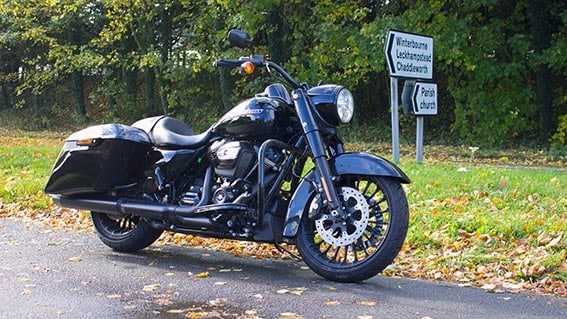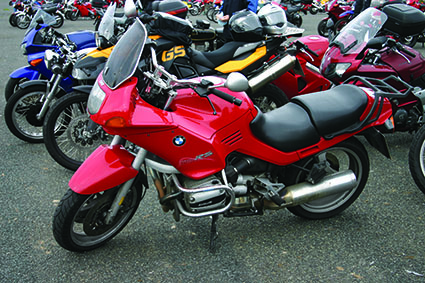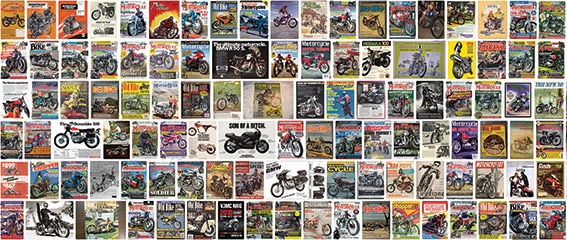A family relative recently advised me that they would be cancelling their subscription to a mainstream motorcycle magazine, commenting that they found my own reviews more useful and interesting than those written by apparently more experienced and certainly more professional motorcycle journalists. He complained that the reviews were all overly positive, with no real-world detail or relevance to himself as a motorcyclist.
Naturally, I was extremely flattered but advised him that he should temper his criticism somewhat given that, in many ways, I had a much easier job than writers who needed to earn a living doing this stuff. Let’s not forget that I write for both my blog and for Slipstream as a hobby, as a critically-minded enthusiast of all things two-wheeled. Then again, I too have issues with motorcycle journalism as it is delivered elsewhere – it’s one of the reasons I started writing about bikes in the first place. After all, if you want something done right, you’ve got to do it yourself.
So let’s examine some of the claims and see if they’re just baseless rumours, or if there’s some fire behind the smoke.
Magazines are paid-off by manufacturers!
I’ve heard from sources in the industry that this has happened in the past. It may persist in some quarters today, though editors I’ve heard from hotly deny it. My suspicion is that any coercion was and remains far more indirect, as motorcycle magazines are generally dependent on three things to survive:
a) Magazine sales
b) Press bikes
c) Advertising revenue
Online sources rarely have access to direct sales or subscriptions, with most content being delivered for free, but also have significantly reduced distribution costs. Printing and shipping magazines around the country isn’t cheap! Web media also have access to a far wider – often global – audience, although language barriers still restrict readership. There have certainly been instances when advertisers have threatened to pull advertisement spending unless the product is reviewed favourably, and editors have had to make some very difficult commercial decisions.
I’m certainly going to continue being suspicious of glowing reviews of products that are advertised on the same page(s) of a publication that is making money advertising said products. Then again, sometimes stuff is just awesome, and an accompanying advertisement is merely a coincidence. I would like to think that my own record speaks for itself, and I can certainly promise that I would sooner refrain from reviewing a product at all than write an artificially biased piece. Any advertisers wishing to promote their clients or products in Slipstream are welcome to get in touch but should be advised that favourable coverage must be earned, rather than bought.
Press Bikes are another issue. Magazines, both online and print, rely on free loans of the motorcycles and products that they write about – buying an example of every new item would be prohibitively expensive and uneconomically viable, given their current business model. There are some exceptions – me included – who stick to writing about bikes and products they’ve purchased or borrowed from dealers, limiting our scope but freeing ourselves from our dependence on the continuing goodwill of their providers. I’m aware of at least one publication that can no longer get access to Yamaha products, for example, after they wrote one too many scathing words about the company’s motorcycles.
Working in the Marketing/PR industry myself, I have to say that such childish responses seem counter-productive. Far from cowing the journalists in question, it’s simply guaranteed that their negative appraisal of the company’s products can never be reassessed in light of new developments. The journalist in question is still writing gleefully about how Yamaha sulkily took their toys and went home, and aren’t being given the chance to ride newer bikes they might enjoy and therefore write about more positively. You can’t hide anything on the internet, so a negative review simply helps put the positive ones into context and improves their perceived legitimacy.
Unfortunately, I suspect that there are a few journalists (and certainly plenty of influencers) who are at least partially cowed by these implied (or even explicit) threats and choose to tone down any criticism, attempting to balance their editorial integrity with their desire for press fleet access. You can learn to read between the lines on such pieces, but it certainly cheapens their value and limits their usefulness to the informed consumer.
My reviews depend exclusively on loan bikes from dealers across the country, and I’ve occasionally travelled significant distances for a few hours on a rare bike I wanted to write about. I also tend not to bother riding or reviewing bikes I don’t expect to enjoy, meaning that my more scathing pieces are written out of disappointment rather than schadenfreude. That being said, I’m sure there are one or two manufacturers who have blacklisted me in advance, just in case I do ever get in touch
Journalists are out of touch with owners!
As mentioned earlier, few – if any – motorcycle journalists have paid with their own money for the bikes they are reviewing. If they had, we’d have to worry about a different kind of bias creeping in. In the same way that few parents will admit that their own children are anything less than perfect angels, it can take a long time for someone to admit that their new bike has any faults whatsoever. And in truth, the reality is that modern motorcycles are all pretty good.
I may only ride each bike I review for a couple of hours, and there’s certainly a skill to quickly evaluating all aspects of a motorcycle that I’ve had to develop. Journalists with access to press fleets may have a bike for a few days or even a couple of weeks, and some publications occasionally run a long-term bike for months and thousands of miles. The longer someone spends with a bike, the wider the variety of circumstances and environments in which they use it, the more likely they are to expose any flaws in the design. In my case, even a positive review is intended to encourage a test ride rather than a blind purchase, and I always try to be clear on when I am speaking from direct experience and when I am merely speculating based on limited data.

Unbeholden to advertisers, I can deliver an unvarnished report (eg: not a fan of this Road King)
But even a long-term loan isn’t the same as handing over your own credit card. That is why the test-ride is so important. Even a professional journalist who tries to speak objectively is unlikely to ever be considering a bike they review for a personal
purchase. Motorcycle Journalism doesn’t pay particularly well, and with a constant conveyor belt of new bikes to ride, rarely have they the means or the need to buy a brand-new motorcycle for themselves. Some journalists are better than others, of course, but I challenge any of them to say, hand on heart, that they are as careful and critical of their analysis when their verdict will have no impact on them personally or financially. Every motorcycle I review for Slipstream is a bike I seriously considered buying, and long-time readers will note that my archives are littered with proof that I am occasionally sufficiently impressed to open my wallet.
I am convinced that this disconnect between purchasers and principle public mouthpieces is one of the reasons we’ve seen the average transaction price of motorcycles creep up over the last couple of decades. It’s no surprise that every BMW motorcycle delivered to reviewers is the fully-equipped top-of-the-range version. As a result, it’s equally unsurprising that the lucky journalists who get to ride these technological wonders are almost universally impressed by the experience. Personally, I’m far more impressed when a manufacturer can deliver a great experience on the cheap – it takes far more skill than simply throwing money at the problem.
I once saw MCN unfavourably compare a £10,000 V-Strom 1000 to a brace of £15,000 alternatives. Not once was the cost differential mentioned as a factor, nor some sort of weighting system used during the final scoring. That’s a bit like telling me a million-pound mansion is more comfortable than a £100 tent; quelle surprise! Yes, PCP has hidden this cost differential for many people, but that’s no excuse for ignoring the price entirely.

Judging by the sales numbers, far more of us are riding older bikes than brand new ones.
But even a long-term loan isn’t the same as handing over your own credit card. That is why the test-ride is so important. Even a professional journalist who tries to speak objectively is unlikely to ever be considering a bike they review for a personal
purchase. Motorcycle Journalism doesn’t pay particularly well, and with a constant conveyor belt of new bikes to ride, rarely have they the means or the need to buy a brand-new motorcycle for themselves. Some journalists are better than others, of course, but I challenge any of them to say, hand on heart, that they are as careful and critical of their analysis when their verdict will have no impact on them personally or financially. Every motorcycle I review for Slipstream is a bike I seriously considered buying, and long-time readers will note that my archives are littered with proof that I am occasionally sufficiently impressed to open my wallet.
I am convinced that this disconnect between purchasers and principle public mouthpieces is one of the reasons we’ve seen the average transaction price of motorcycles creep up over the last couple of decades. It’s no surprise that every BMW motorcycle delivered to reviewers is the fully-equipped top-of-the-range version. As a result, it’s equally unsurprising that the lucky journalists who get to ride these technological wonders are almost universally impressed by the experience. Personally, I’m far more impressed when a manufacturer can deliver a great experience on the cheap – it takes far more skill than simply throwing money at the problem.
I once saw MCN unfavourably compare a £10,000 V-Strom 1000 to a brace of £15,000 alternatives. Not once was the cost differential mentioned as a factor, nor some sort of weighting system used during the final scoring. That’s a bit like telling me a million-pound mansion is more comfortable than a £100 tent; quelle surprise! Yes, PCP has hidden this cost differential for many people, but that’s no excuse for ignoring the price entirely.
Motorcycles are still very diverse, so these generalist magazines have many different journalists on the books, each one with their own preferences and biases, each predisposed to look favourably upon certain brands or types of motorcycle. They also tend to be more familiar with the bikes they personally enjoy, and it therefore makes sense that a magazine editor would send their sports bike junkie to review the new Kawasaki ZX10R, rather than the weatherworn touring enthusiast. This means that each review is written by the journalist most likely to enjoy each bike, and least likely to question the core tenets of its philosophy.
A Kawasaki H2SX would likely be labelled as overweight and slow to turn by someone who preferred dedicated track bikes, and a relaxed touring enthusiast would flay it for its appalling fuel economy and missing top box. And while it might be amusing to read such reviews, it wouldn’t really provide any useful information to anyone. Of course, anyone who hasn’t figured out what sort of bikes they like won’t glean any useful data from a slew of universally positive reviews either. Match the right journalist to the bike and you’ll learn that every bike has good brakes, handles well, gets acceptable fuel economy and is sufficiently comfortable for longer rides. Everything is relative, unfortunately, and what’s comfy or economical from one person’s perspective might be considered shockingly poor from another.
I wear my biases openly, usually opening my articles with statements explaining what I was looking for in each case. I try to detail the parameters I consider good for each aspect and make sure to explain why I do or don’t like something about a particular motorcycle. I’m predisposed to favour less expensive, less powerful bikes, and value practicality, reliability and longevity over outright performance. I’m suspicious of technology for technology’s sake, and my particular physiology means I don’t find sports bikes comfortable, so I’ll probably never bother reviewing one – you already know it’s not going to be a positive write-up.
One big difference, however, is that I am aware of my biases, and can use that information to improve my objectivity. Even if I don’t like a bike, or rather, decide that it’s not fit for my particular purpose, I’ll always do my best to speculate about the purposes for which it might be suited. My hope is that this will help my readers draw their own conclusions and inform their own decisions. I can give friends and family members more personal advice because I know what their particular biases and preferences are, and can more accurately gauge which bikes I think they would enjoy or would fulfil their needs.
I’m afraid I don’t know you. You’ll have to make up your own mind.





